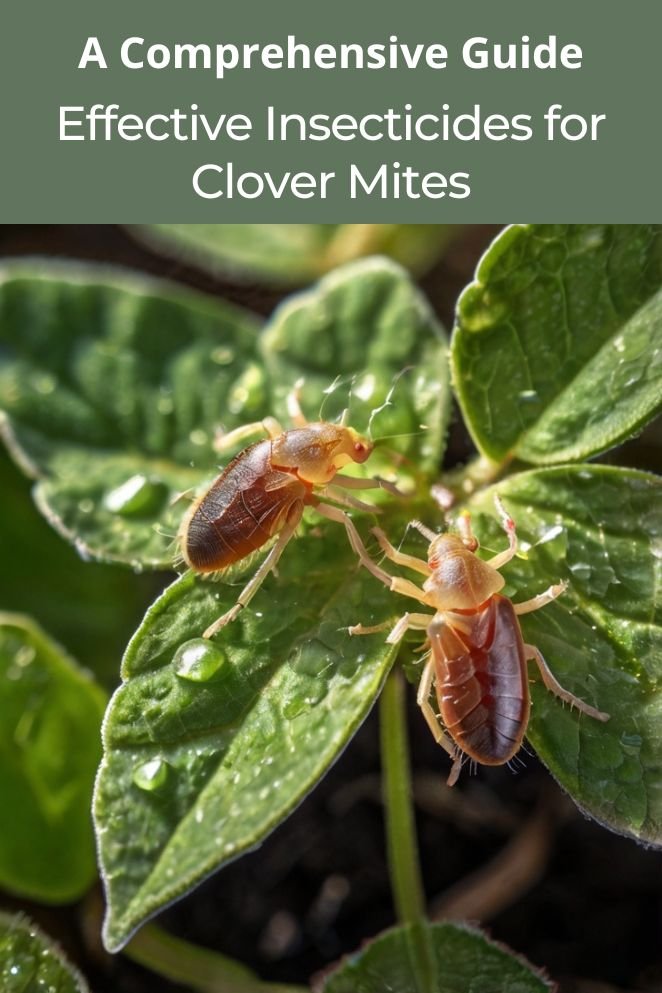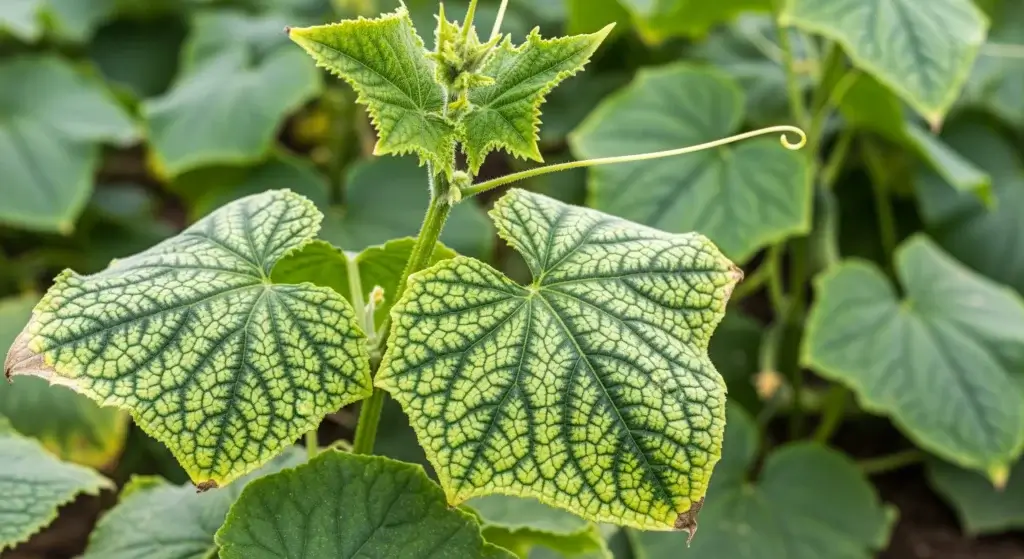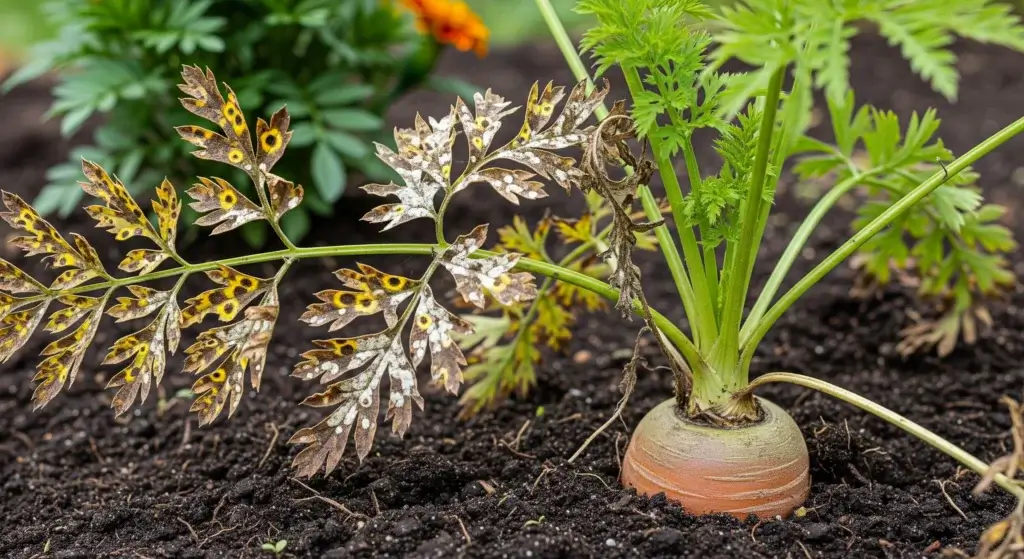
If you’ve noticed tiny red or brown specks moving around your windowsills, walls, or garden plants, you’re likely dealing with clover mites.
These pests, while not harmful to humans, can be a significant nuisance, especially when they invade your home in large numbers. Clover mites can leave stains on surfaces when crushed, adding to the frustration.
Fortunately, there are effective ways to manage these pests, including the use of insecticides.
In this guide, we’ll explore different types of insecticides, how to apply them, and what you need to know to keep your home and garden clover mite-free.
Types of Insecticides for Clover Mites
When it comes to controlling clover mites, choosing the right insecticide is crucial.
There are two main categories: organic and chemical insecticides.
Each type has its advantages and considerations, depending on your preferences and the severity of the infestation.
- Read also: Clover Mite vs. Spider Mite: Understanding the Differences
- Read also: Identifying and Treating Spider Mite Damage on Plant’s Leaves
Organic insecticides
Organic insecticides are a popular choice for those looking for a more environmentally friendly approach.
These products are generally derived from natural sources and are safer for use around children, pets, and beneficial insects.
Here are some common organic insecticides effective against clover mites:
- Diatomaceous earth (DE): DE is a natural powder made from the fossilized remains of tiny aquatic organisms. When clover mites come into contact with DE, it damages their exoskeleton, leading to dehydration and death.
- Neem oil: Derived from the seeds of the neem tree, neem oil is a natural insecticide that disrupts the hormonal systems of pests, preventing them from feeding, breeding, or growing. It’s effective against a wide range of pests, including clover mites.
- Insecticidal soaps: These soaps are made from potassium salts of fatty acids and work by breaking down the outer layer of the mite, leading to dehydration. They are safe for use on plants and can be applied directly to areas where clover mites are present.

Chemical insecticides
For more severe infestations, chemical insecticides may be necessary.
These products contain synthetic chemicals designed to kill pests quickly and efficiently.
While chemical insecticides can be effective, they should be used with caution and as a last resort.
These chemicals can harm beneficial insects and contaminate water sources.
Always follow label instructions carefully.
Wear protective clothing and equipment when applying these insecticides.
Here are some common chemical insecticides used for clover mites:
Pyrethroids
Effective for quick knockdown, but mites can develop resistance.
Examples include permethrin, bifenthrin, cyfluthrin and deltamethrin.
Bifenthrin is a pyrethroid insecticide that affects the nervous system of pests, leading to paralysis and death.
It’s commonly used in both residential and commercial settings and is effective against a broad spectrum of pests, including clover mites.
Permethrin is similar to bifenthrin and it’s available in various formulations, including sprays, dusts, and granules, making it versatile for different applications.
Cyfluthrin is effective for both indoor and outdoor use and can be applied to various surfaces where mites are found.
Organophosphates
Provide longer-lasting control but are more toxic.
Examples include malathion and chlorpyrifos.
They work by interfering with the nervous system of insects, ultimately leading to their death.
Both malathion and chlorpyrifos are highly toxic to bees.
Avoid applying them when bees are active.
Miticide
Miticide is a specialized pesticide formulated specifically to target mites, including the pesky clover mite.
Two commonly known miticides are dicofol and bifenazate.
Dicofol was once a popular choice for mite control, particularly effective on outdoor plants like ornamental grasses.
However, due to its harmful impact on wildlife and potential risks to human health, its use has been prohibited in many regions.
Bifenazate remains a viable option for managing mite populations.
While effective, it’s essential to follow the product label carefully for safe and proper application.

How to Apply Insecticides
Proper application of insecticides is key to successfully controlling clover mites.
Whether you’re treating indoor spaces or your garden, following the right procedures ensures that the treatment is effective and safe.
Indoor application
- Surface sprays: Use a ready-to-use spray or mix a concentrate according to the label’s instructions. Apply the insecticide along windowsills, door frames, baseboards, and other areas where clover mites are likely to enter.
- Crack and crevice treatment: For more targeted control, use a crack and crevice spray or dust. These products are designed to penetrate small spaces where mites may be hiding, providing long-lasting control.
Outdoor application
- Perimeter treatments: To prevent clover mites from entering your home, apply a perimeter treatment around the foundation of your house. Spray the insecticide along the ground and up the exterior walls, paying special attention to areas where vegetation meets the structure.
- Lawn and garden treatment: Clover mites often come from the lawn, so treating your yard is essential. Use a lawn insecticide and apply it evenly across your lawn and garden beds. Focus on areas near the house, as this is where mites are most likely to migrate indoors.
Timing of Insecticide Application
The optimal timing for insecticide application depends on several factors, including:
Type of pest
Timing is crucial when it comes to applying insecticides for clover mites.
The best time to treat is early spring and late fall when mite populations are at their peak.
By applying insecticides during these periods, you can prevent large infestations from developing.
Life cycle of the pest
- Egg stage: Treating eggs is often ineffective.
- Nymph or larval stage: This is the best time to apply insecticides as they are actively feeding.
- Adult stage: Effective for immediate control but may not prevent future infestations.
Weather conditions
- Temperature: Most insecticides work best in warm temperatures.
- Wind: Avoid applying insecticides on windy days to prevent drift.
- Rainfall: Avoid applying insecticides shortly before a heavy rain as it can wash them away.
Plant growth stage:
- Sensitive plants: Avoid applying insecticides during flowering or fruiting stages.
- General rule: Apply insecticides when plants are actively growing but not under stress.

- Read also: Keeping Your Indoor Space: How To Prevent Spider Mites Indoors
- Read also: A Gardener’s Guide: Effective Insecticides for Squash Bugs
Conclusion
Clover mites may be tiny, but they can cause significant headaches for homeowners.
By understanding the types of insecticides available and how to apply them correctly, you can effectively manage clover mite infestations and keep your home and garden pest-free.
Whether you choose organic or chemical insecticides, always follow safety guidelines and consider regular follow-up treatments for the best results.
FAQs
Insecticides typically start working within a few hours to a couple of days, depending on the product used.
Yes, if you’re treating outdoor areas, it’s often necessary to reapply insecticides after heavy rain to maintain effectiveness.
Yes, you can use preventive measures such as sealing cracks, maintaining a healthy lawn, and using natural repellents like diatomaceous earth or neem oil.



